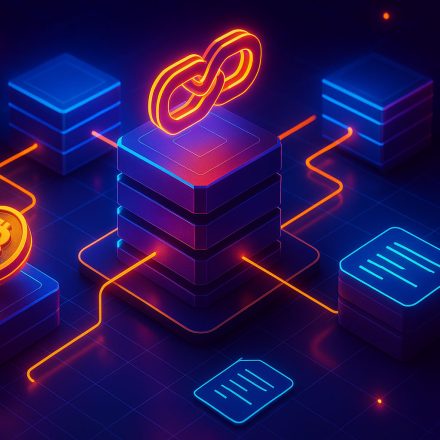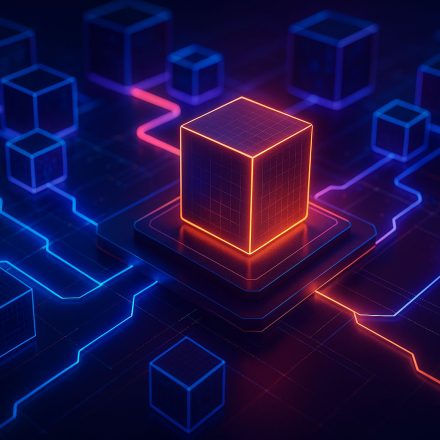
💱 How Do Cryptocurrencies Work? A Beginner’s Guide
Cryptocurrencies like Bitcoin, Ethereum, and thousands of others have taken the financial world by storm — but many people still wonder: how do cryptocurrencies work?
Table Of Content
In this beginner-friendly guide, we’ll break it down in simple terms. You’ll learn what makes crypto different from traditional money, how transactions happen, and why blockchain is at the core of it all.
At BlockchainInsights.org, we believe that understanding crypto doesn’t have to be complicated. Let’s get started.
💡 What Is Cryptocurrency?
A cryptocurrency is a digital form of money that exists only online and is secured using cryptographic techniques. Unlike traditional currencies like the dollar or euro, cryptocurrencies are decentralized, meaning no single entity controls them — not a bank, government, or company.
Cryptocurrencies are stored and transferred on public networks called blockchains, which act as shared ledgers accessible to anyone in the world.
🔗 The Role of Blockchain Technology
To understand how cryptocurrencies work, you must first understand blockchain — the technology that makes crypto possible.
A blockchain is a distributed, immutable digital ledger that records transactions in blocks. These blocks are linked in chronological order, forming a chain. Each new transaction is verified by network participants (called nodes) and added to the blockchain for everyone to see.
This system ensures:
- Transparency: Anyone can view transactions
- Security: Cryptography protects data
- Trustlessness: No third party is needed to validate transfers
If you’re new to blockchain, start here:
“How Blockchain Works: A Simple Guide for Beginners”
https://blockchaininsights.org/how-blockchain-works
🔐 How Do Transactions Work?
Here’s a simple step-by-step breakdown of how a cryptocurrency transaction happens:
- You create a transaction (e.g., sending 0.1 BTC to a friend)
- The transaction is broadcast to the blockchain network
- Miners or validators verify the transaction (depending on the consensus mechanism used)
- Once verified, the transaction is added to a block
- The block is added to the blockchain, and the transfer is complete
The system uses public-key cryptography, meaning you have:
- A public key (your address, which people use to send you crypto)
- A private key (your secret code to approve transactions — never share it)
⚙️ Consensus Mechanisms: How Crypto Stays Secure
To maintain the integrity of the network and prevent fraud, cryptocurrencies use consensus mechanisms — rules that help nodes agree on the blockchain’s state.
The most common types include:
🔹 Proof of Work (PoW)
- Used by Bitcoin
- Miners solve complex math puzzles to validate transactions
- Requires high energy consumption
🔹 Proof of Stake (PoS)
- Used by Ethereum and others
- Validators “stake” crypto as collateral to confirm blocks
- More energy-efficient and scalable
Other variations include Delegated PoS, Proof of Authority, and hybrid models — each with trade-offs in security, decentralization, and speed.
💸 How Are Cryptocurrencies Created?
New cryptocurrencies (or tokens) are created through various methods:
- Mining (in PoW): New coins are issued as rewards to miners who secure the network
- Staking Rewards (in PoS): Validators earn tokens for confirming blocks
- Token Generation Events: Projects can create tokens via ICOs, IDOs, or airdrops
Most cryptocurrencies have fixed supply rules programmed into their code. For example, Bitcoin has a maximum supply of 21 million coins.
🌐 Who Controls Cryptocurrencies?
That’s the beauty of it — no one, and everyone.
Cryptocurrencies are governed by:
- Open-source code
- Decentralized node networks
- Community governance and developer consensus
Anyone can run a node, mine, stake, or develop on the blockchain. The system is open and inclusive — the opposite of centralized banks or financial systems.
🧠 Real-World Use Cases
Cryptocurrencies are used for far more than speculation:
- Payments: Send money globally with no bank fees
- DeFi (Decentralized Finance): Borrow, lend, and trade crypto without banks
- NFTs: Use crypto to buy and sell digital art and collectibles
- DAOs: Participate in decentralized communities
- Gaming and the Metaverse: Own in-game assets and economies
📝 Final Thoughts
So, how do cryptocurrencies work? They combine cryptography, decentralized networks, and transparent record-keeping to create a system where people can transact freely and securely — without needing a middleman.
Whether you’re using crypto to invest, send money, or build apps, understanding how it works is the first step toward mastering the digital economy.
At BlockchainInsights.org, we’re here to guide you every step of the way.













